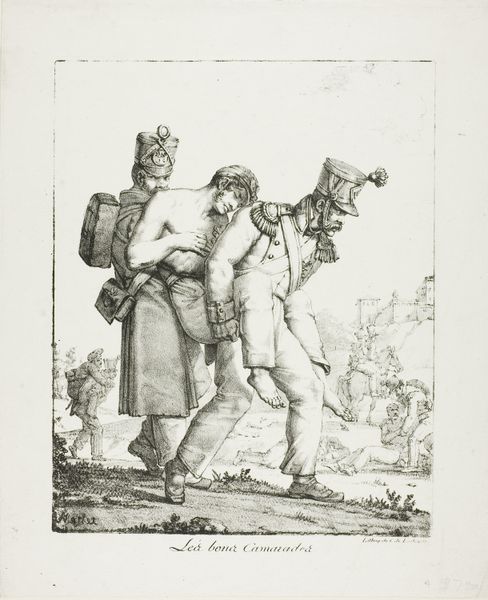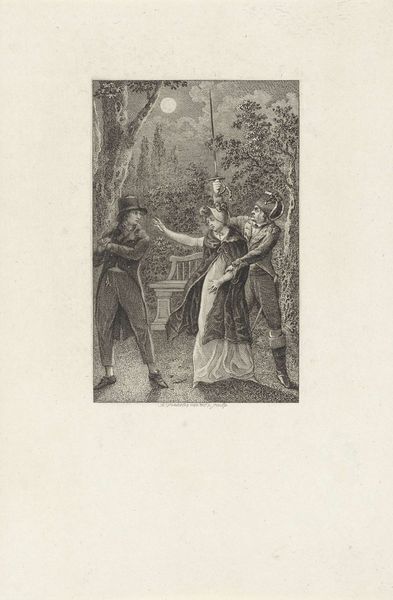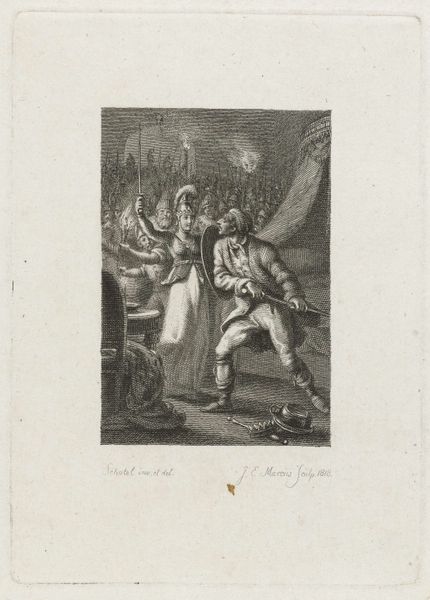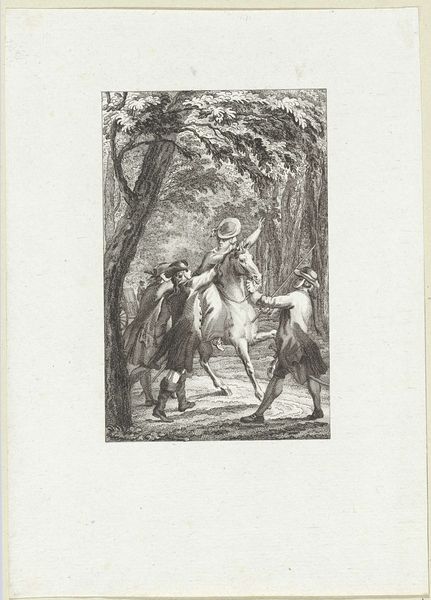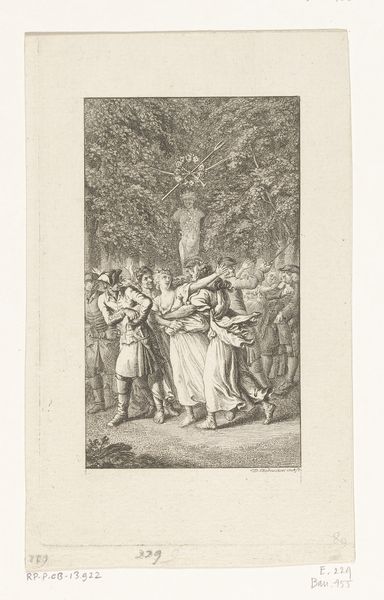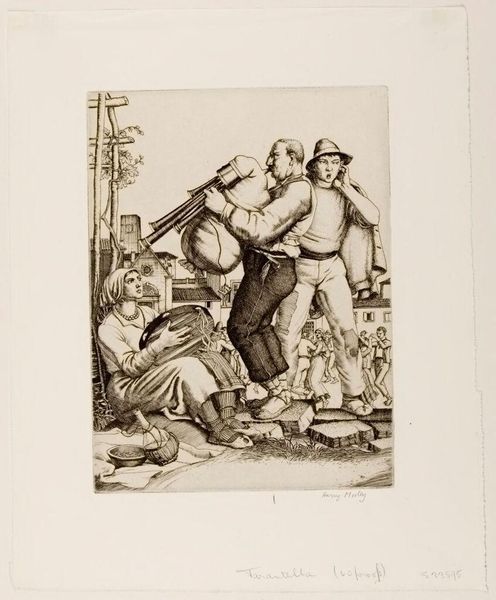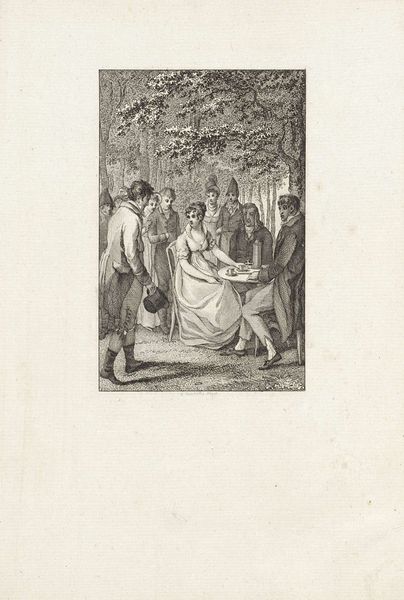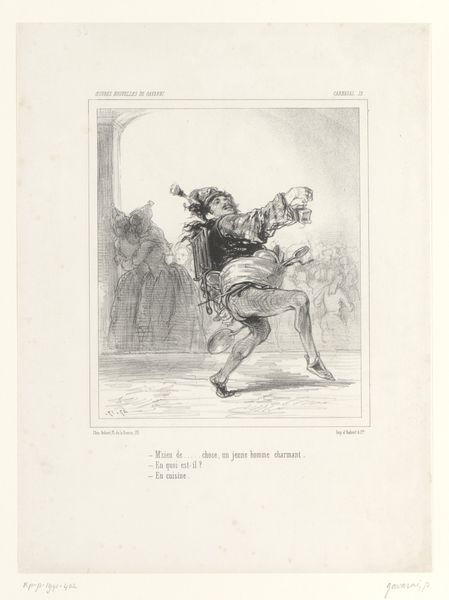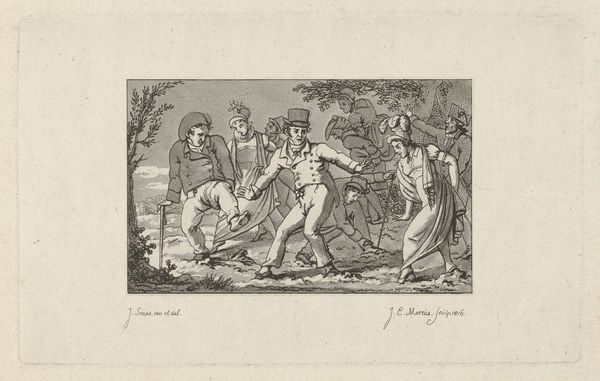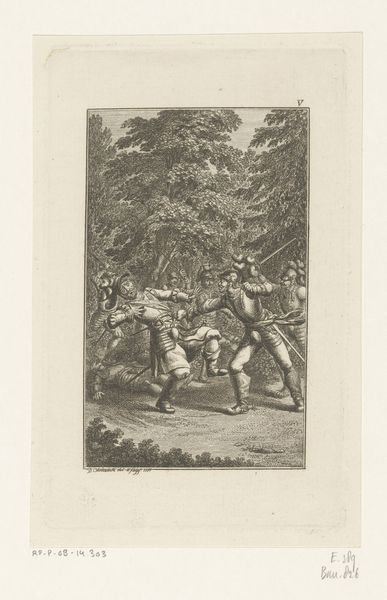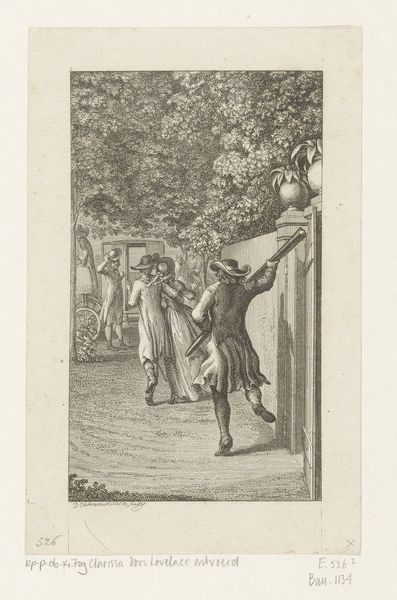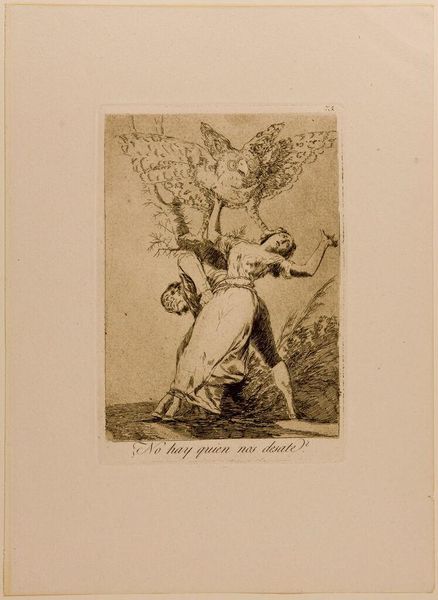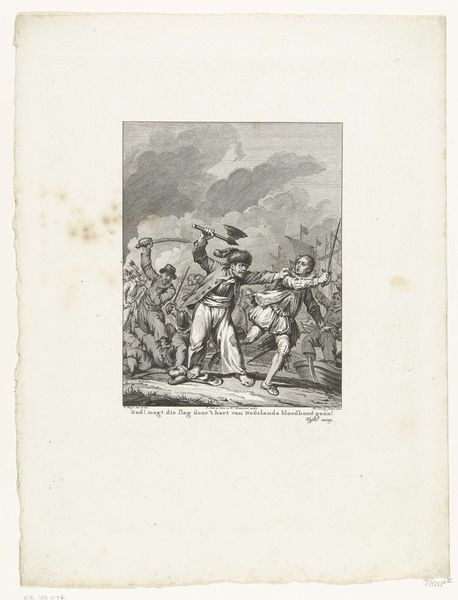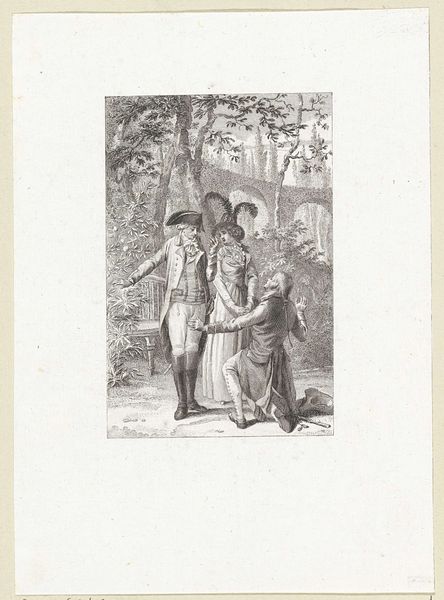
print, engraving
#
narrative-art
# print
#
old engraving style
#
landscape
#
figuration
#
romanticism
#
genre-painting
#
engraving
Dimensions: height 246 mm, width 164 mm
Copyright: Rijks Museum: Open Domain
Curator: This engraving by Reinier Vinkeles, created in 1805, is titled "Tweegevecht aan de bosrand"—"Duel at the Edge of the Woods." It’s currently held in the Rijksmuseum. Editor: The stark contrast immediately draws you in, doesn’t it? There’s a sort of tense stillness. You know something’s about to happen, or just has. It makes me wonder, what exactly are they fighting for? Curator: Beyond the pure aesthetics, this piece acts as a mirror reflecting the societal structures and honor codes prevalent in early 19th-century Europe, specifically around aristocratic masculinity. Dueling was more than personal disputes. Editor: Oh, definitely. It was performative, a way to solidify social standing through displays of courage, or perhaps foolish pride. The "woods" backdrop becomes an arena for maintaining, and often reifying, hierarchical power dynamics. The phrase below in the engraving "O mijn beminde Clarissa"... suggests to me the presence of female influence. But for whose honour is this deadly game truly being played? Curator: Perhaps. And to expand upon Vinkeles’ craft here, notice how precisely the lines render both figures and the surrounding landscape. This allows the work to breathe. There is an emotional realism created by that specificity. I feel their anger in that still image, do you feel that? Editor: Realism... emotion... Sure, there's skill, but that’s what always happened during that period: we would always choose death and honour above a productive discourse. As though such aggression had any merit or value when one considers the sheer vanity inherent in those displays of dominance! You cannot, with words, change the image from its cultural origin. Curator: Haha, okay! Maybe the scene’s melodramatic intensity is slightly overwrought. And if one considers the role romanticism played during those periods, those acts were deemed perfectly just! Although there are many who feel that period romanticized death as something quite natural... like losing in chess. However, it is up to each viewer, isn’t it, how that final point impacts them! Editor: I agree. As we step away from Vinkeles' print, may it provoke reflections about our complex human tendency for conflict and our need to critique these inherited narratives of violence. Curator: A beautiful thought, let's carry that with us, then.
Comments
No comments
Be the first to comment and join the conversation on the ultimate creative platform.
